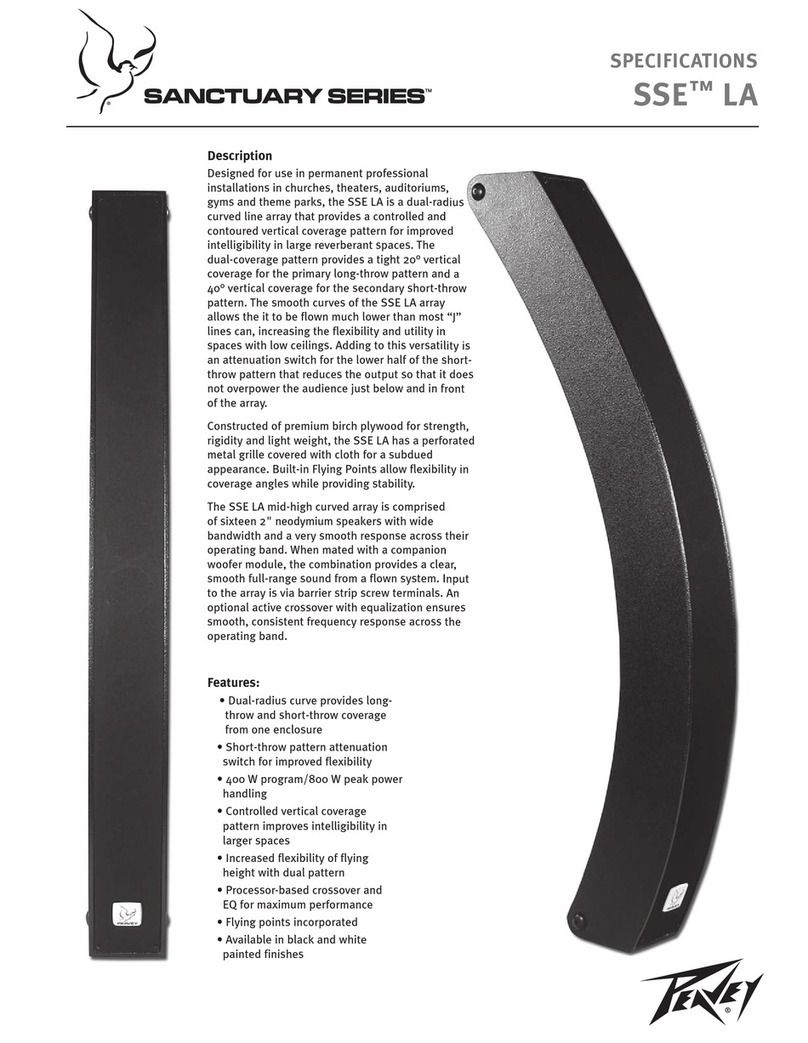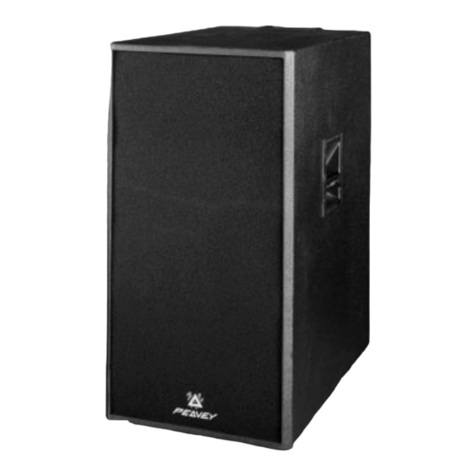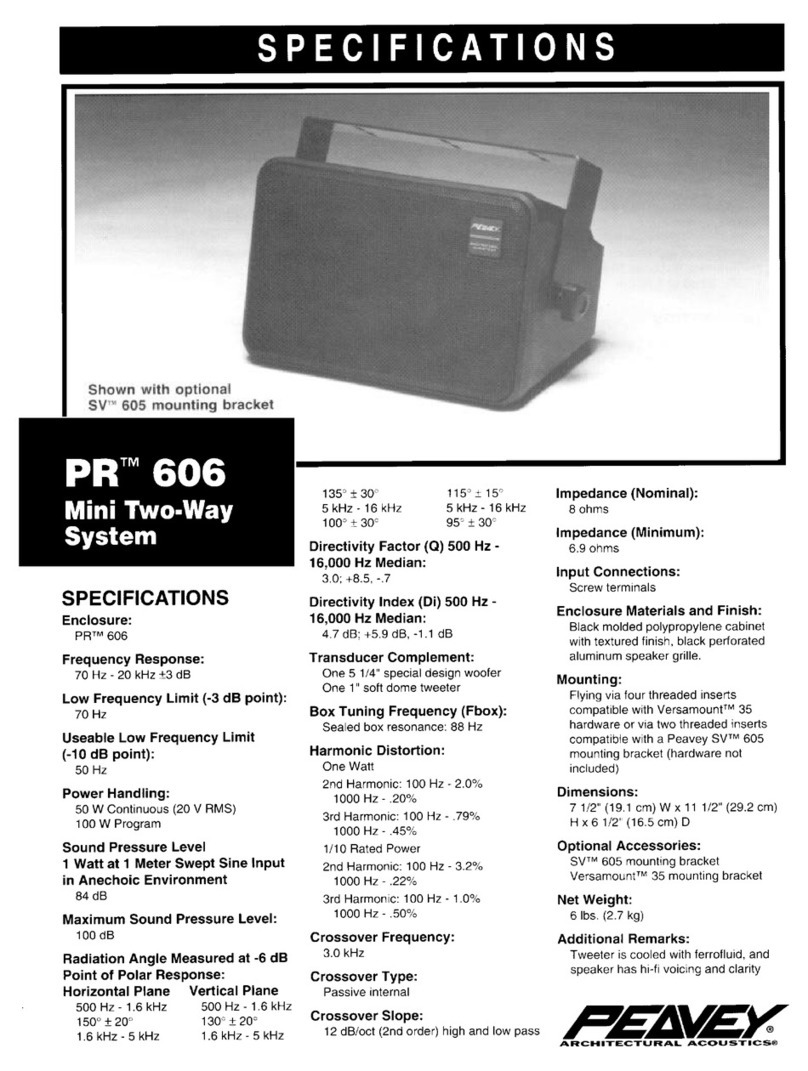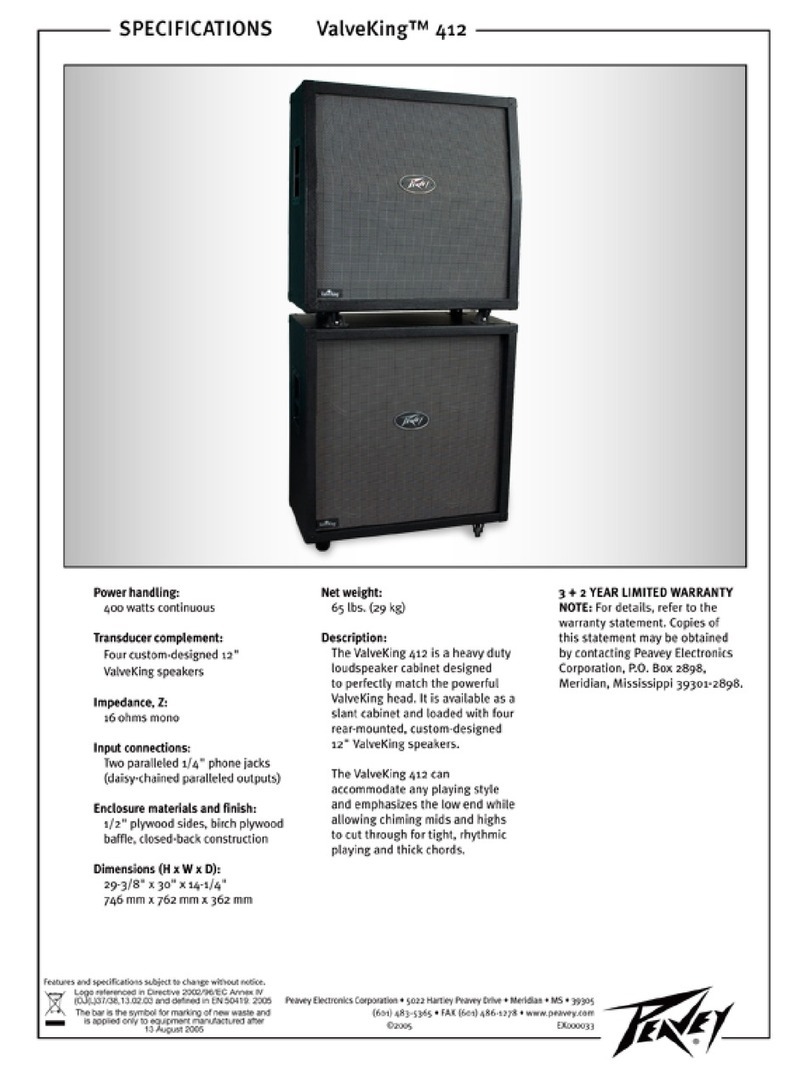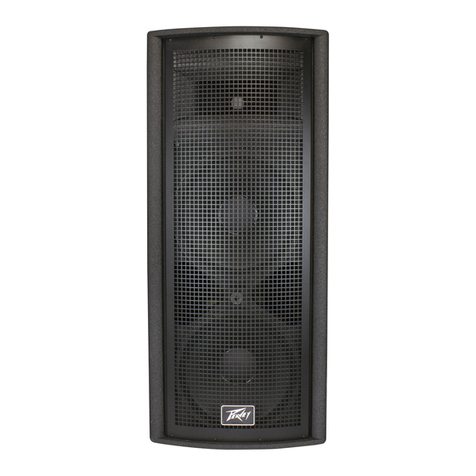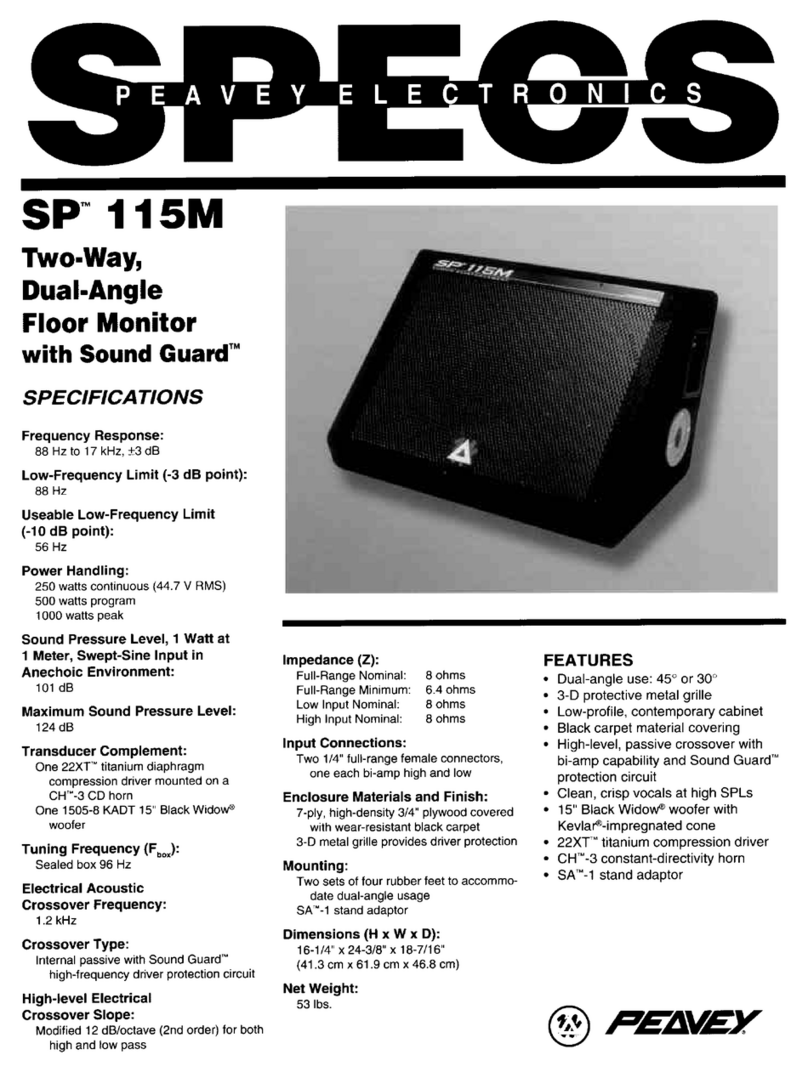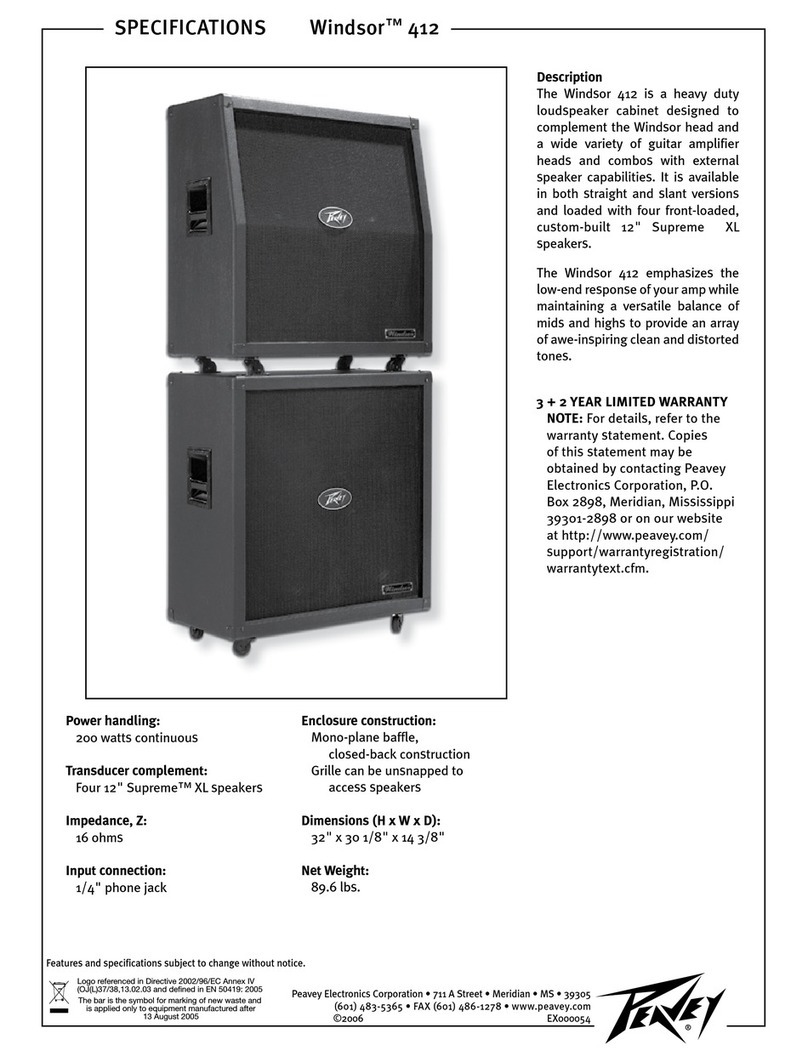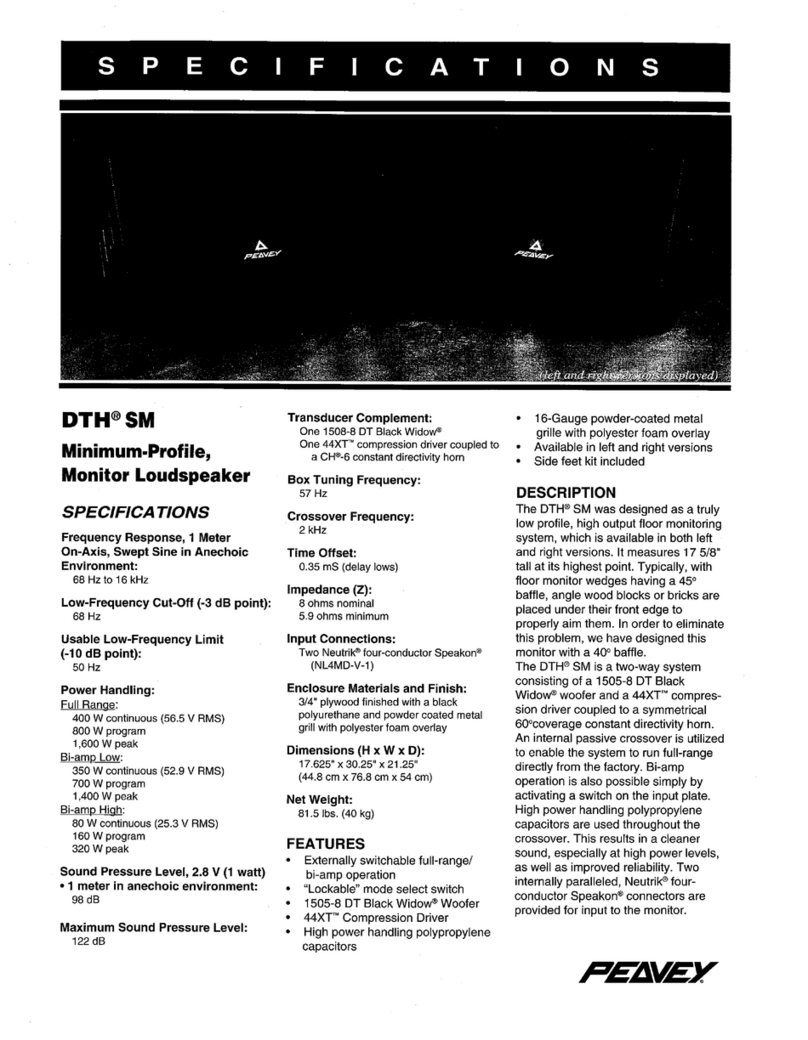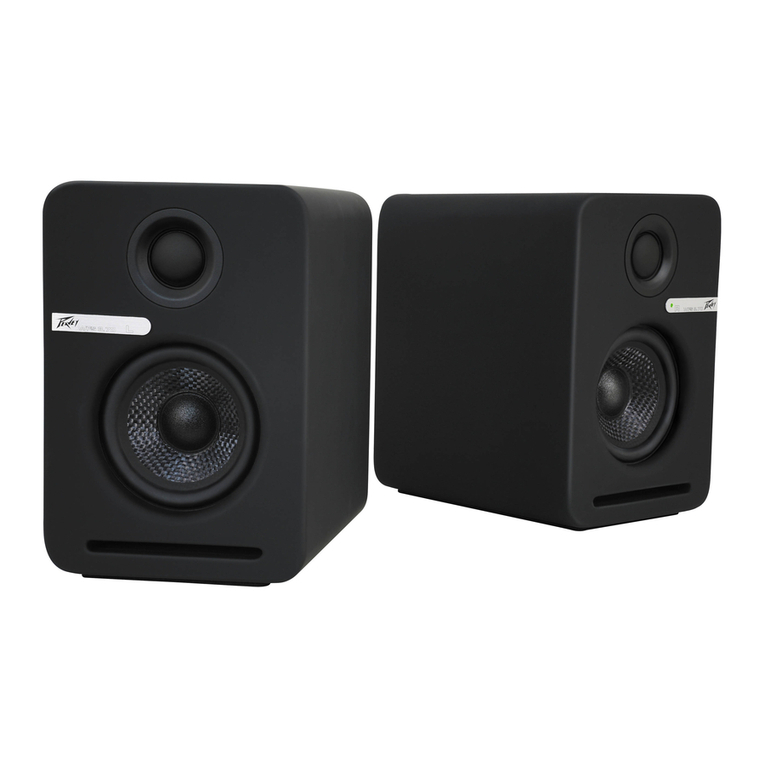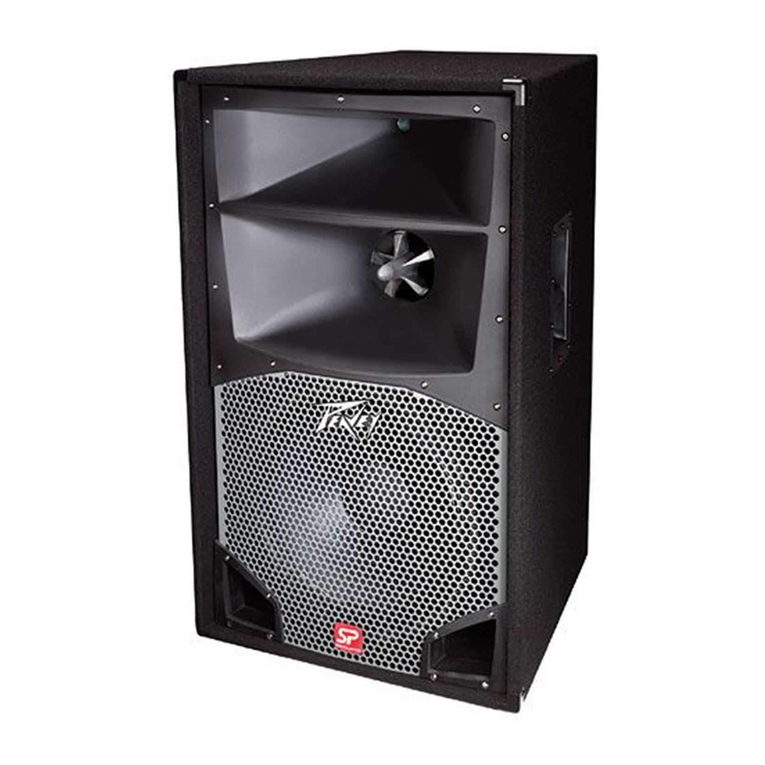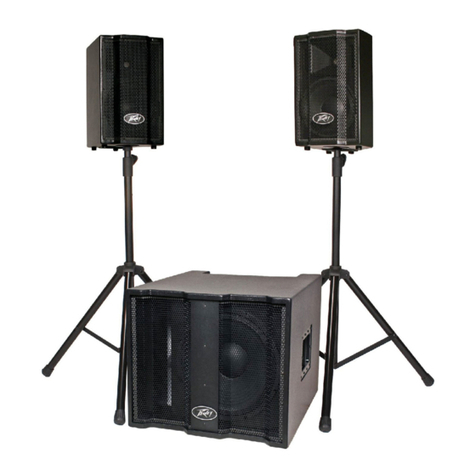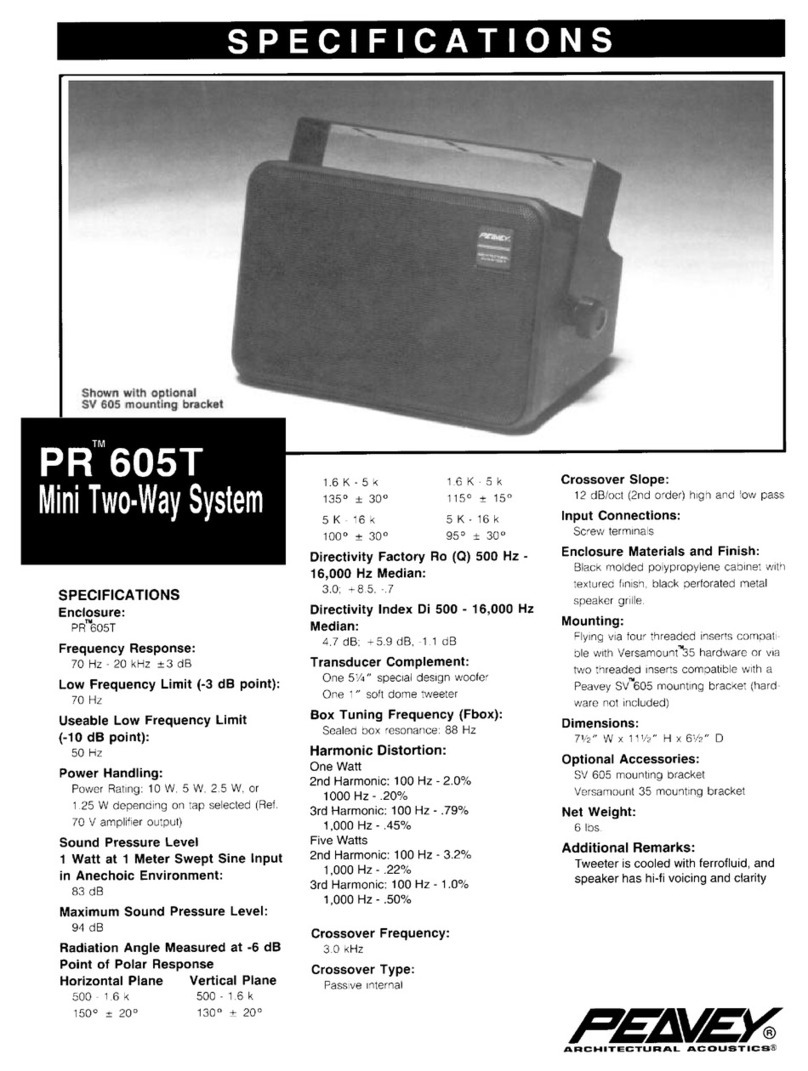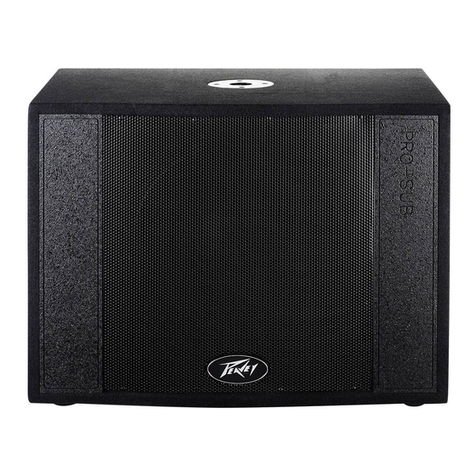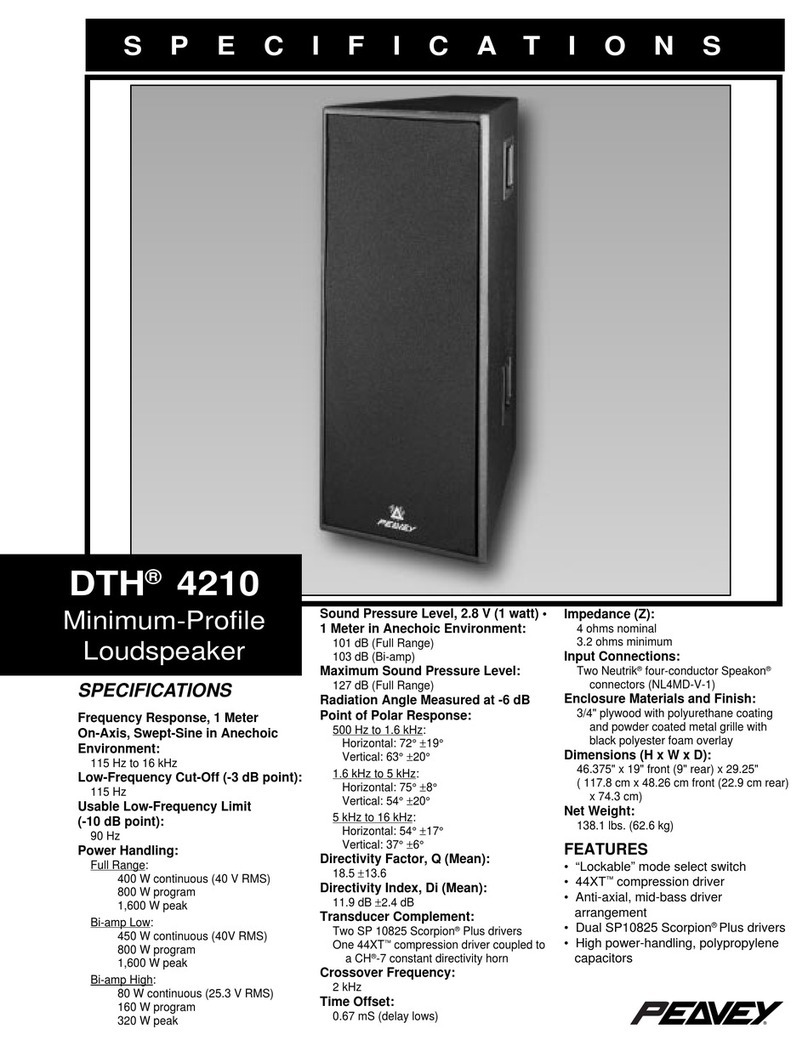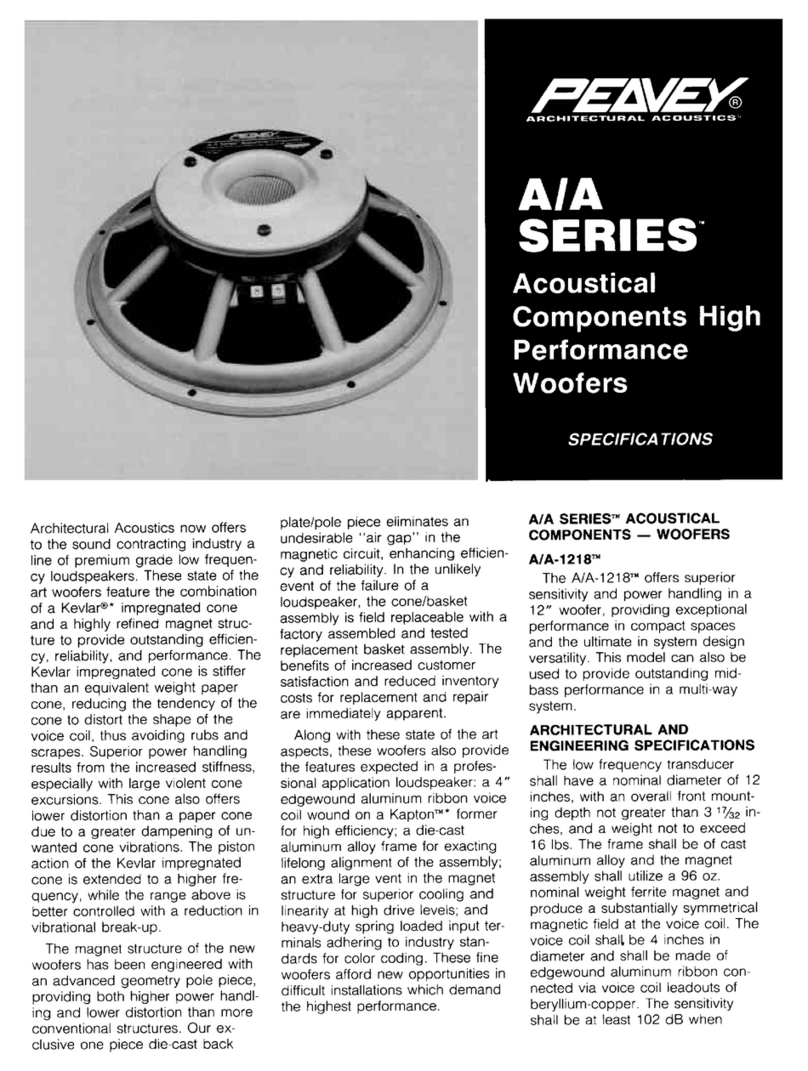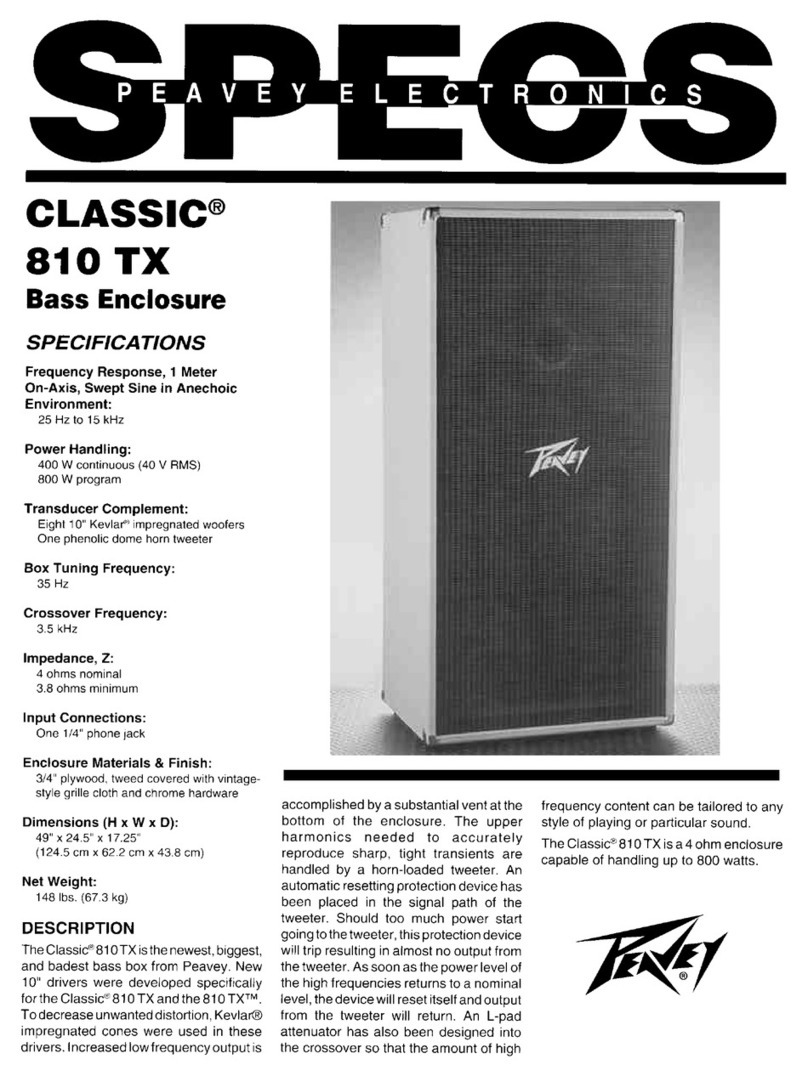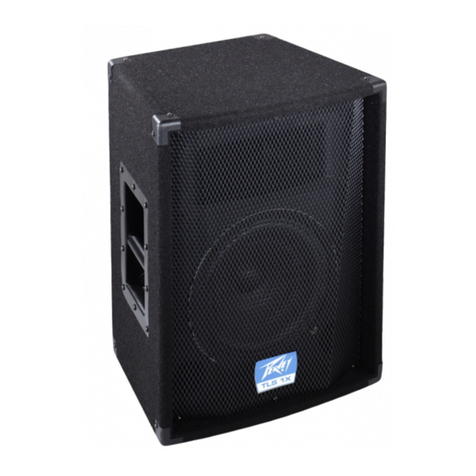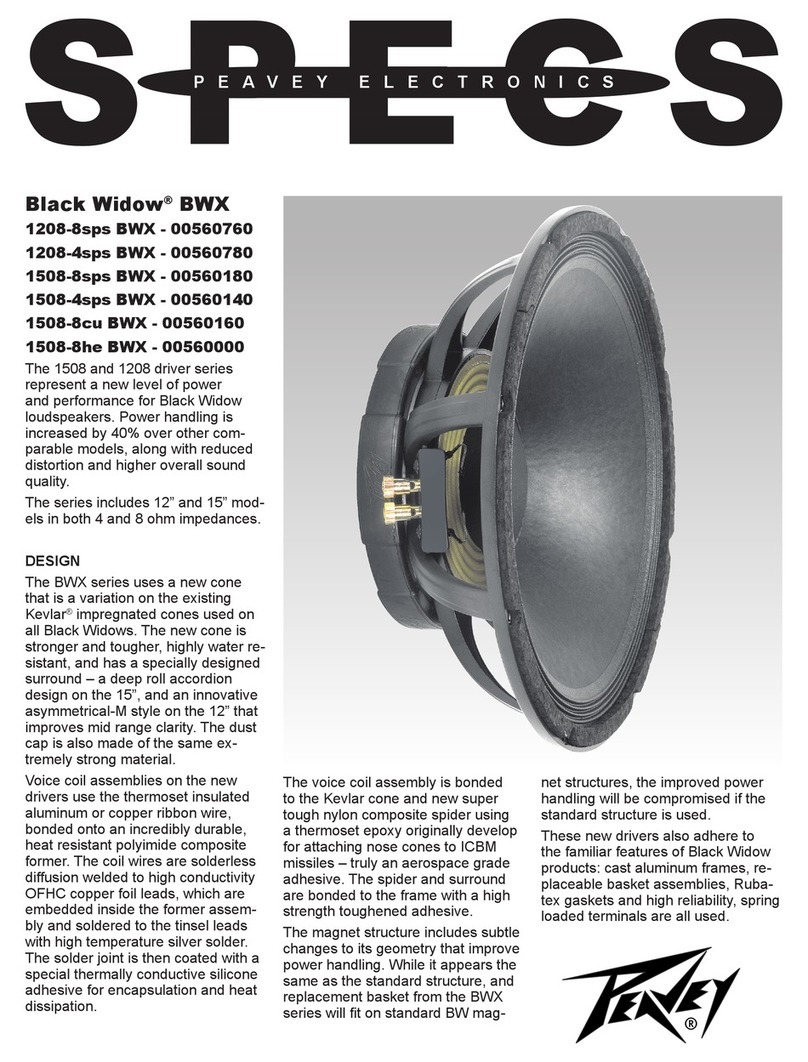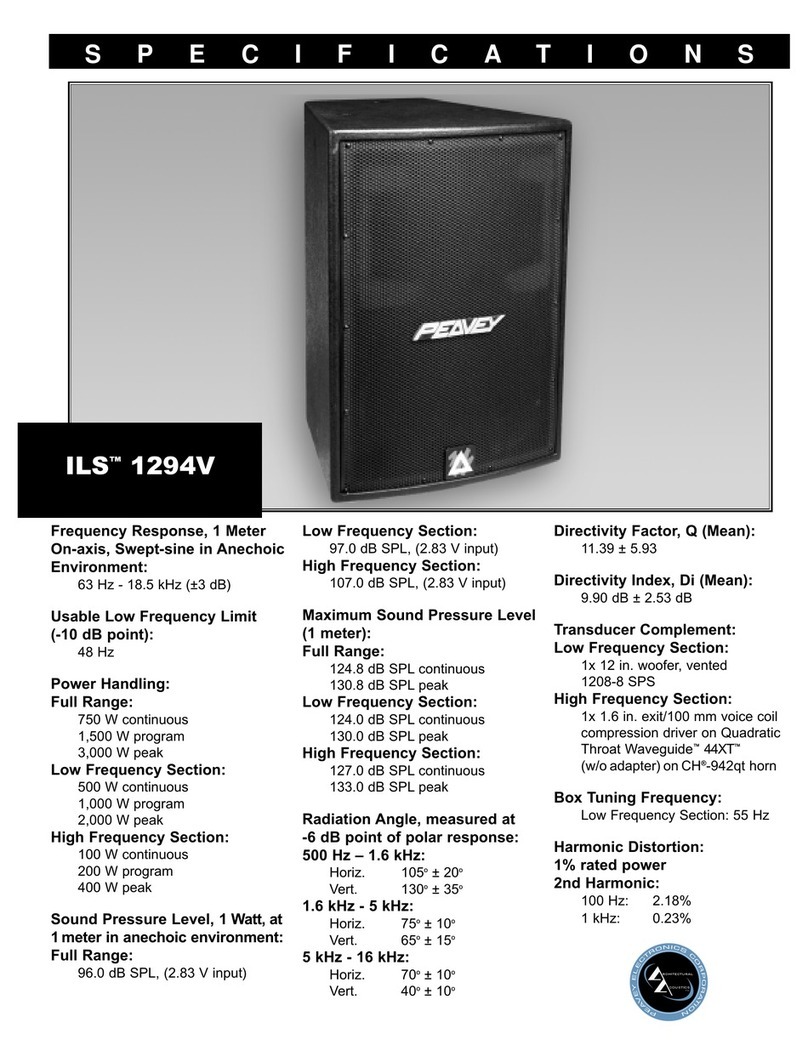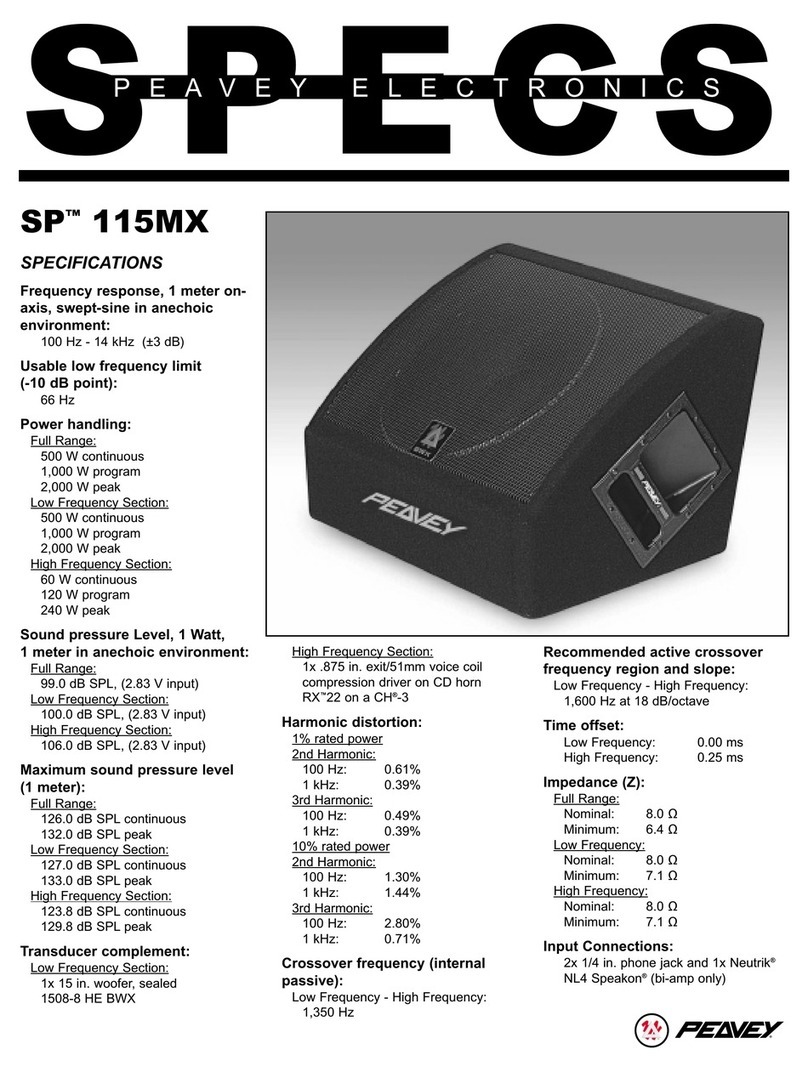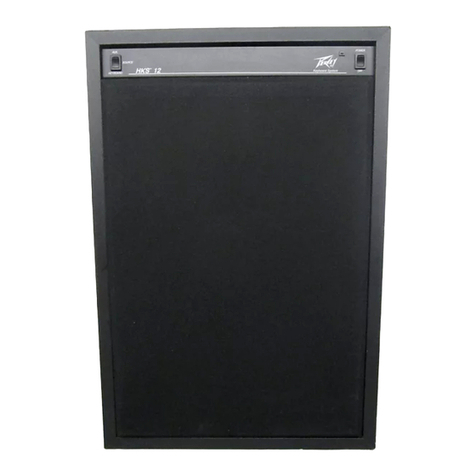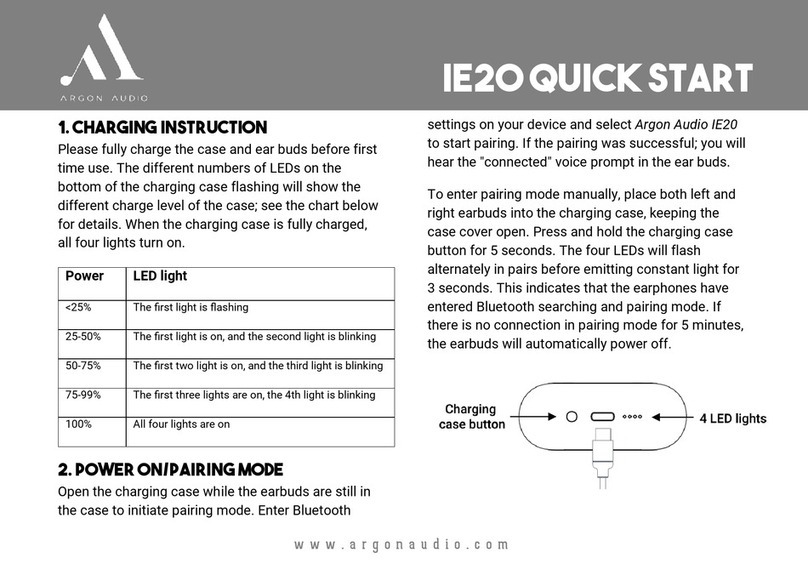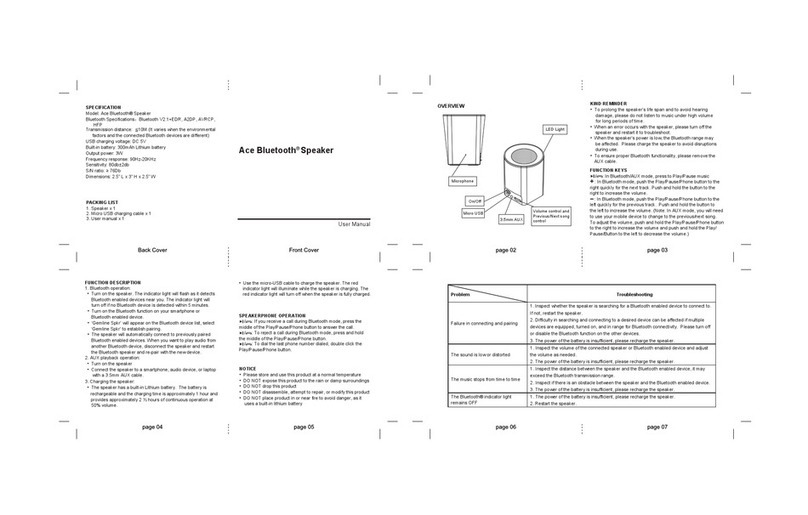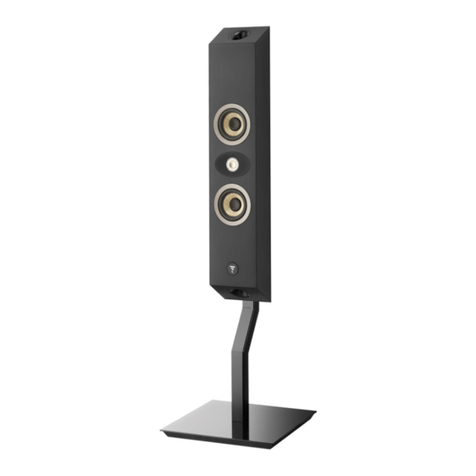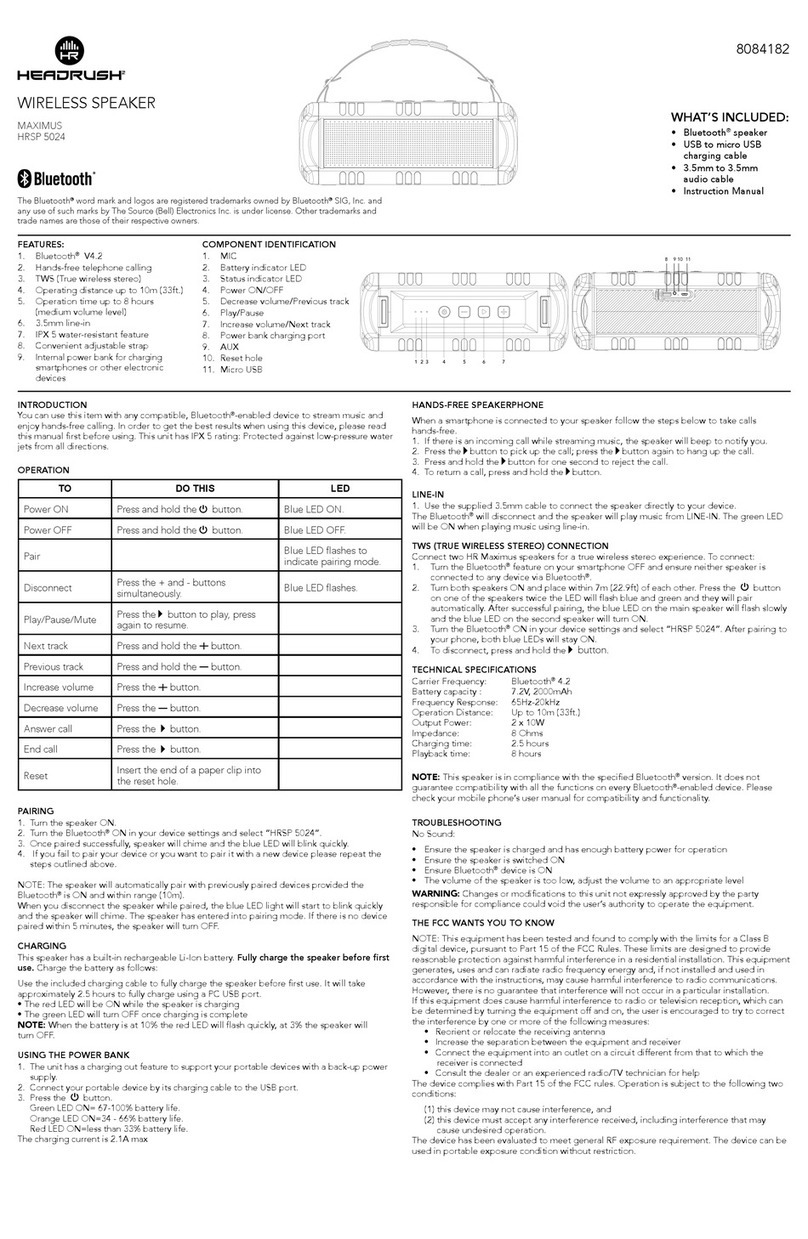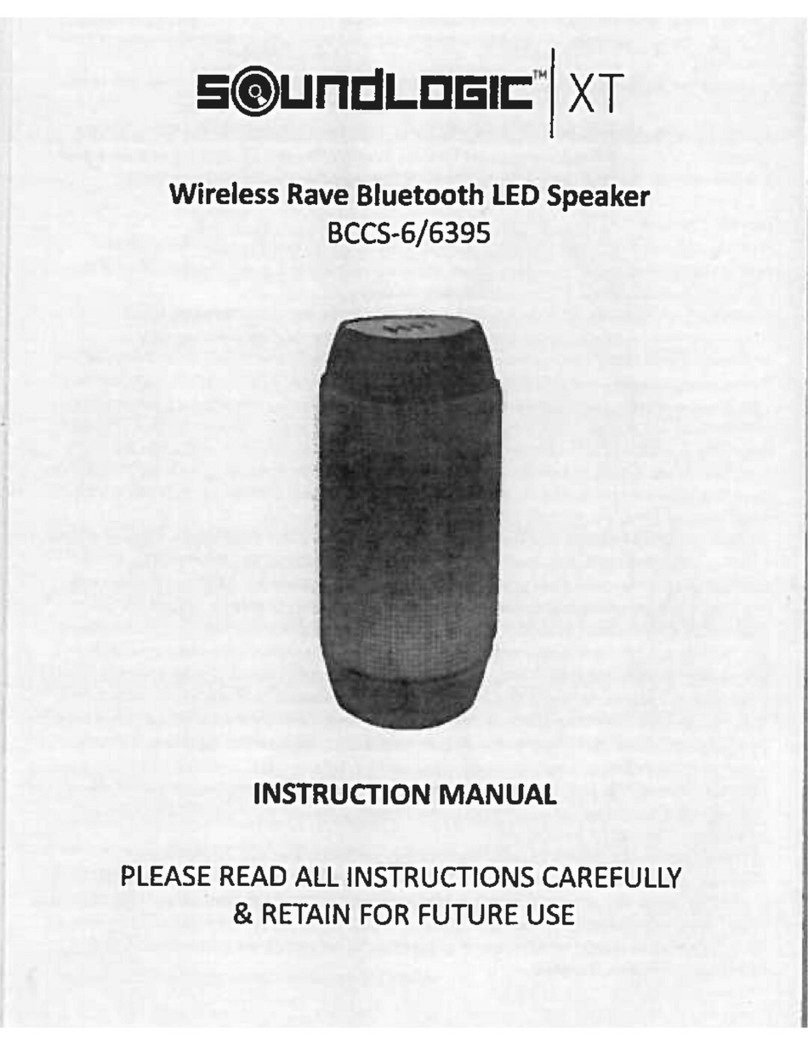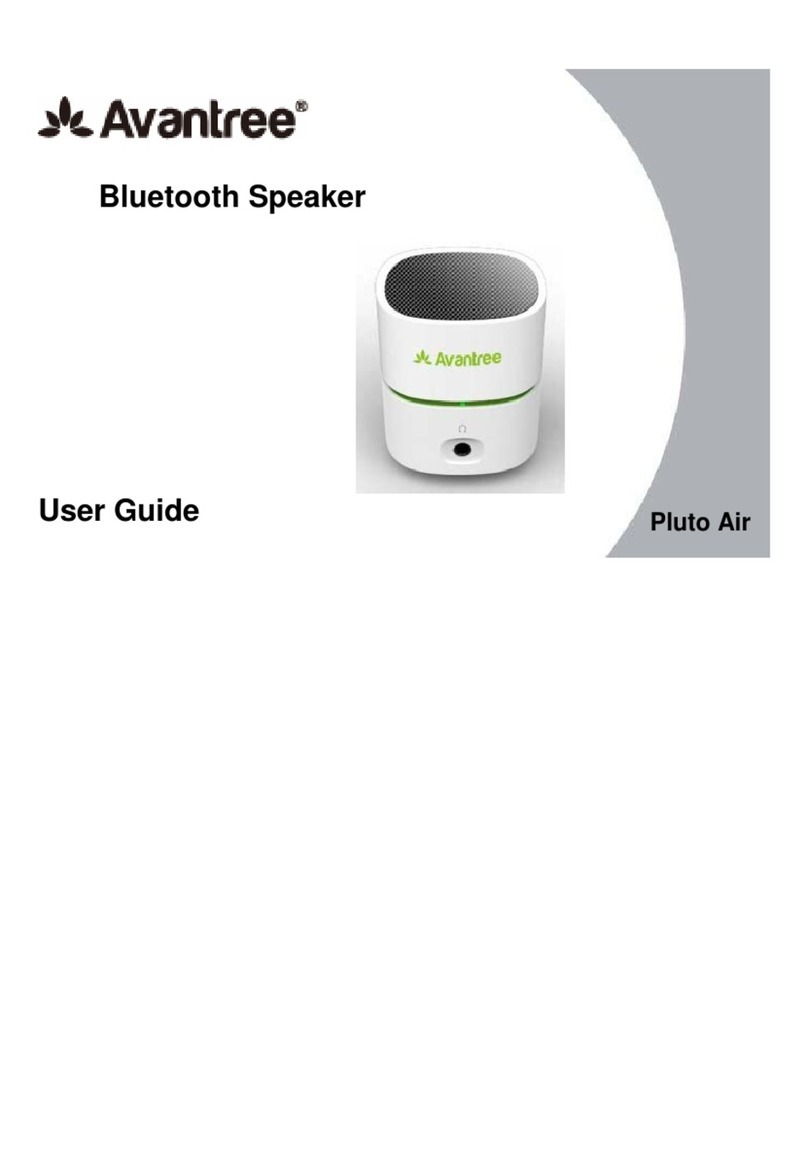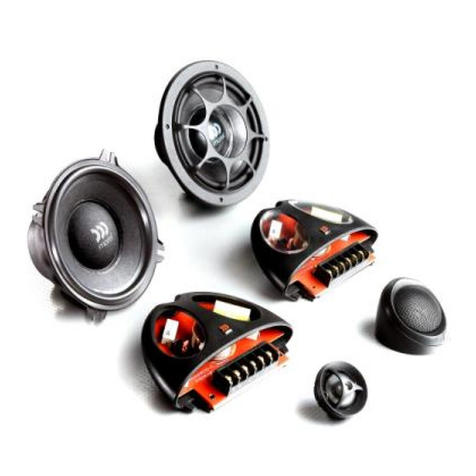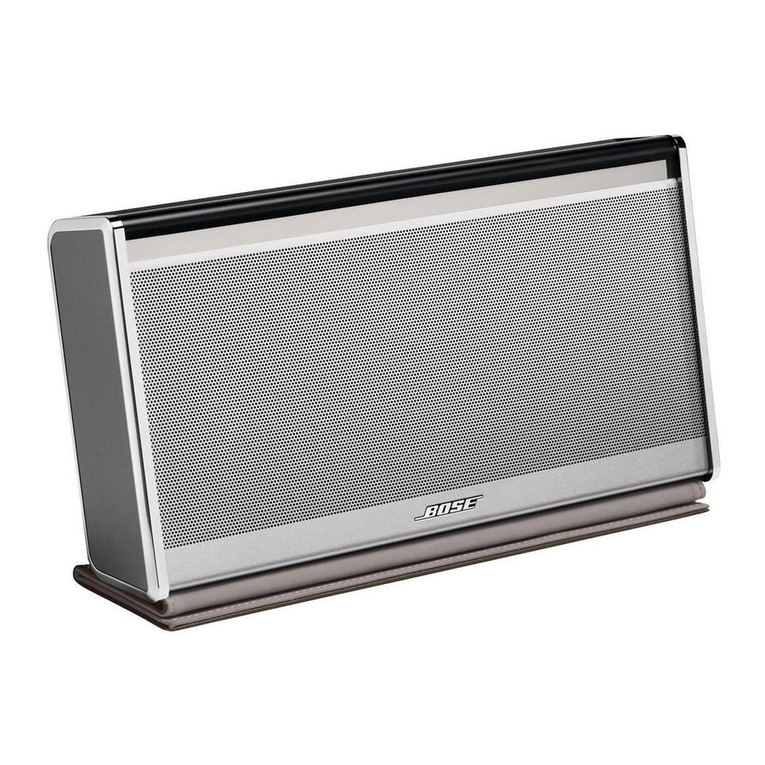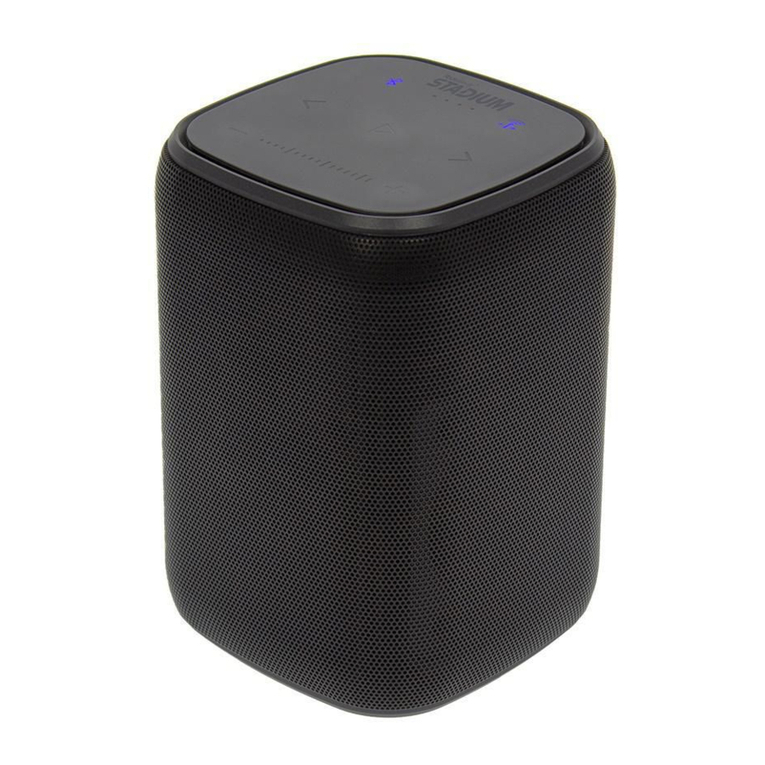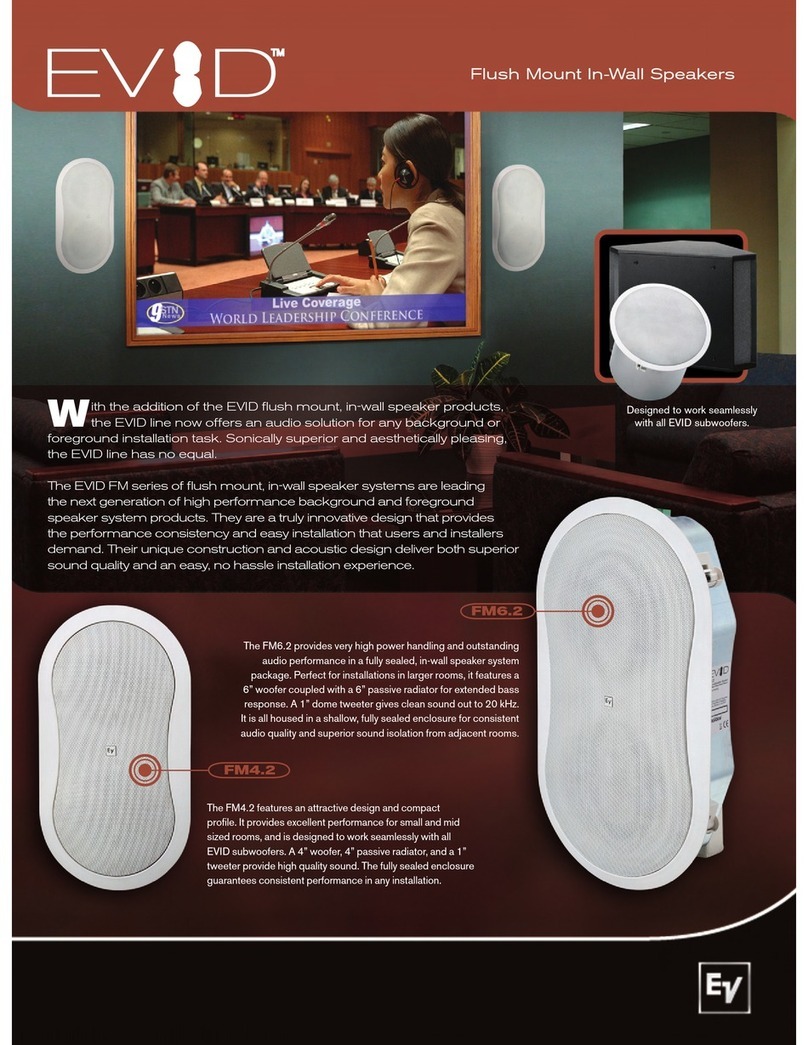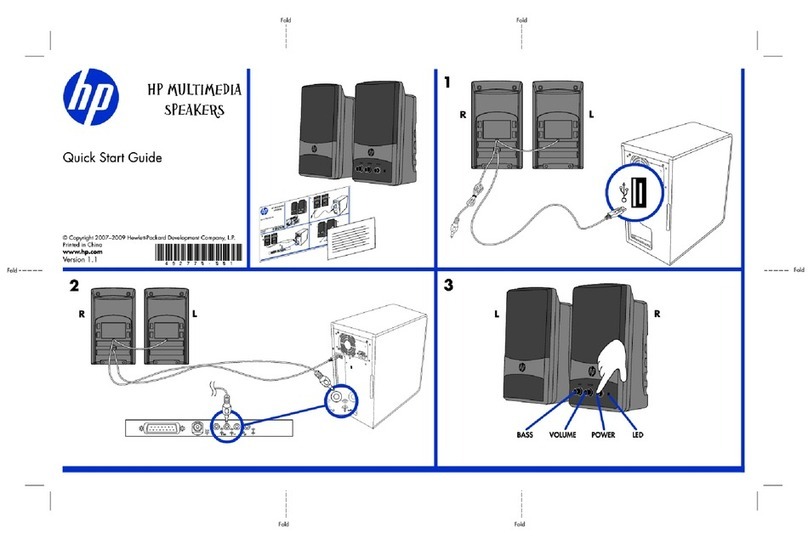Input connections:
2x 1/4 in. phone jack and 1x Neutrik®
NL4 Speakon®(Biamp only)
Enclosure materials and finish:
/4" OSB finished in black carpet
Mounting provisions:
This unit is not designed for overhead
suspension
Dimensions (H x W x D):
Front:
.25 in. x 21.00 in. x 22.75 in.
845 mm x 5 mm x 578 mm
Rear:
.25 in. x 14.00 in. x 22.75 in.
845 mm x 56 mm x 578 mm
Net weight:
85 lbs. ( 8.6 kg)
eatures:
• Two-way, full range/biampable PA
enclosure
• Sound Guard HF driver protection
circuit
• Rx22™driver with a 2" titanium
diaphragm coupled to a CH®941
90° X 40° constant-directivity horn
• 15" BWX Black Widow®with
Kevlar®cone and field-replaceable
basket
• SP™X series trapezoidal cabinet
and styling with integral stand
adapter
• External voicing switch
• Neutrik®biamp jack
Description
The SP 2X is both a cosmetic and
performance redesign of the SP 2G
loudspeaker system. This high power
handling two-way loudspeaker system is
comprised of a 15" BWX woofer with a
Kevlar impregnated cone and an Rx22
compression driver coupled to a CH 941
constant directivity horn. This unit can be
driven in full-range mode simply by
plugging into one of the two 1/4" phone
jacks on the input plate. A Neutrik
Speakon connector is provided as an
input for biamp operation. The trapezoidal
design of the enclosure allows arrays to
be constructed much more easily than it
would be using a rectangular shaped box.
This shape also greatly reduces the build-
up of standing waves on the inside of the
enclosure. This ensures a minimum of
mid-bass and mid-range coloration of the
reproduced sound due to the cabinet. The
SP 2X is constructed of /4" OSB and
covered with Peavey’s durable black
carpet. Polymer corners are also a part of
the unit to provide added protection to the
enclosure. A powder coated expanded
metal grille covers the lower part of the
front of the enclosure to protect the low
frequency driver from unforeseen
accidents.
A voicing switch on the input cup
allows for the selection of two different
response settings for the loudspeaker
system. The normal position will yield a
more flat response. The EQ position will
have decreased output in the mid-range
and upper mid-range areas. This position
may be preferred for some types of
program material. The response curve for
each position is given in figure 1.
Sound Guard III is the redesign of
Peavey’s proprietary circuit for high
frequency driver protection for the new
Rx22 compression driver. This is an
integral part of the crossover for the SP
2X. The input signal is routed through the
Sound Guard III circuit in both full-range
and biamp modes of operation. When the
high frequency drive level to the SP 2X
exceeds a predetermined threshold the
Sound Guard III circuit is engaged. The
effect that this has is to subtly decrease
the signal level going to the Rx22 so that
it will not be damaged due to long-term
overpowering. Short duration transients
will not be attenuated by Sound Guard III
and have the possibility to damage the
Rx22. The Sound Guard III circuit is a
dynamic circuit that will attenuate the
signal more the larger the signal is, very
similar to a compressor. This is
accomplished through the use of a
specially selected dynamically resistive
light bulb. If the bulb in your Sound Guard
III should ever burn out a replacement
may be obtained from an Authorized
Peavey Service Center. However, if a
Peavey replacement bulb is not readily
available, a Sylvannia SK bulb may be
located at various loudspeaker or
electronics parts stores.
requency response
This measurement is useful in
determining how accurately a given unit
reproduces an input signal. The frequency
response of the SP 2X is measured at a
distance of 1-meter using a 1 Watt (into
the nominal impedance) swept-sine input
signal. As shown in figure 1, the selected
drivers in the SP 2X combine to give a
smooth frequency response from 5 Hz —
16 kHz.
Power handling
There are many different approaches
to power handling ratings. Peavey rates
this loudspeaker system's power handling
using a full-range form of the AES
Standard 2-1984. Using audio band 20 Hz
to 20 kHz pink noise with peaks of four
times the RMS level, this strenuous test
signal assures the user that every portion
of this system can withstand today’s high
technology music. This rating is contingent
